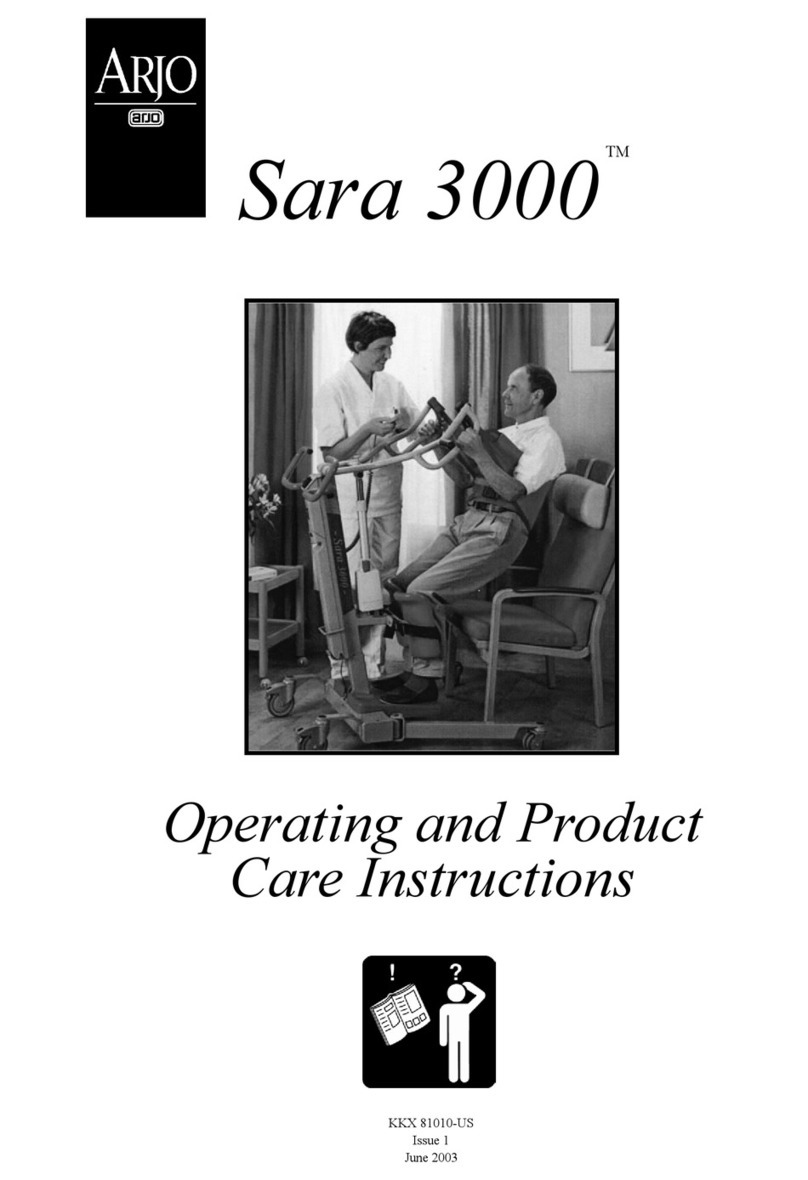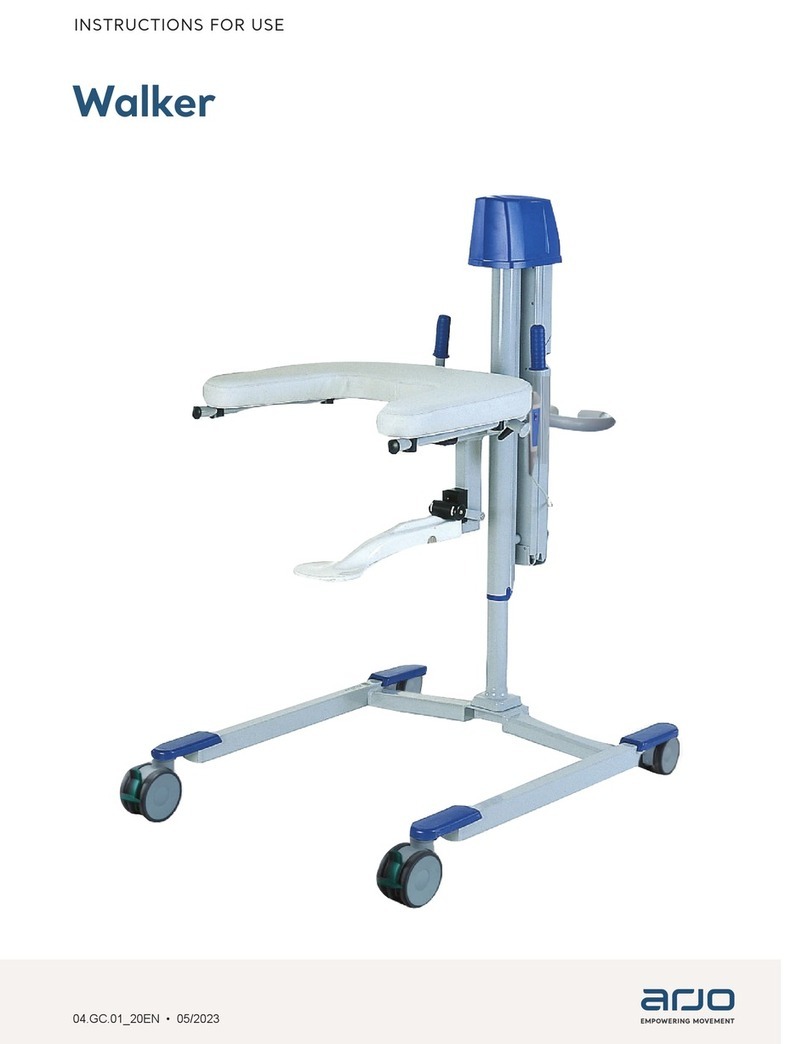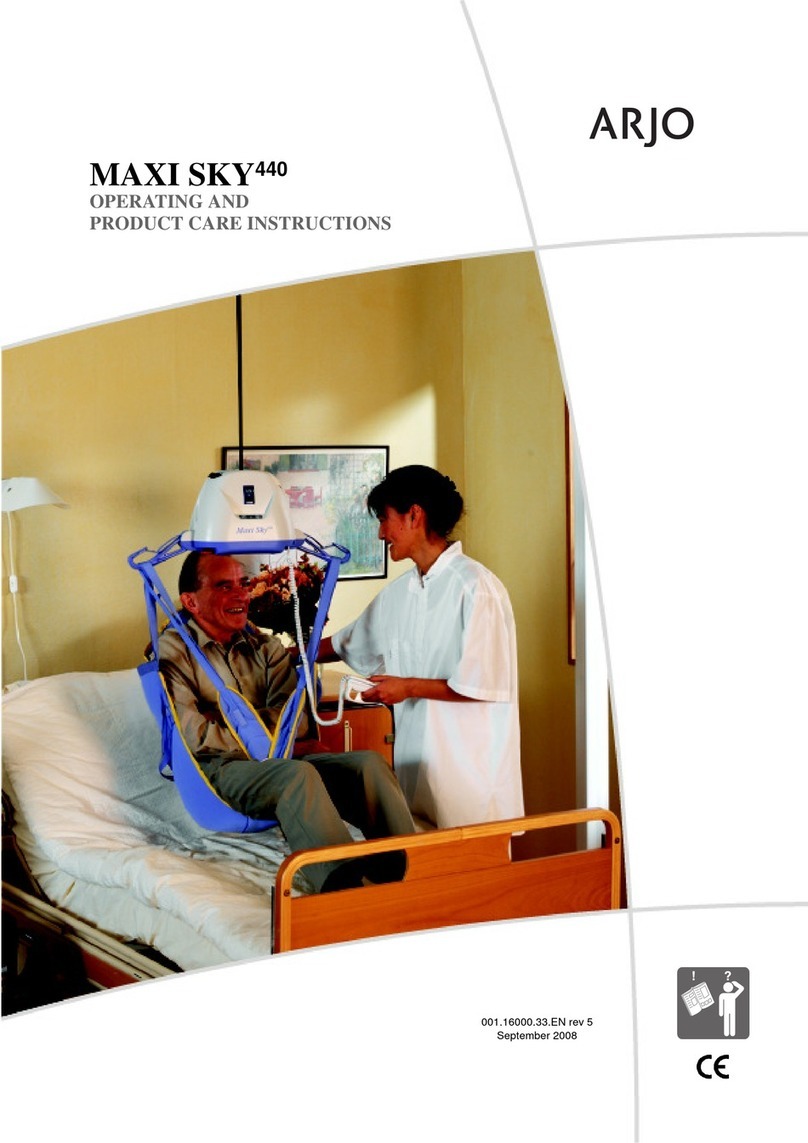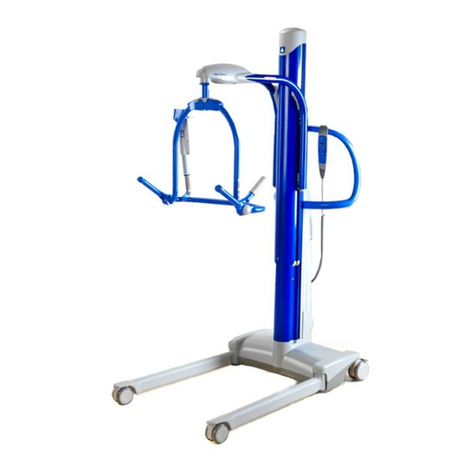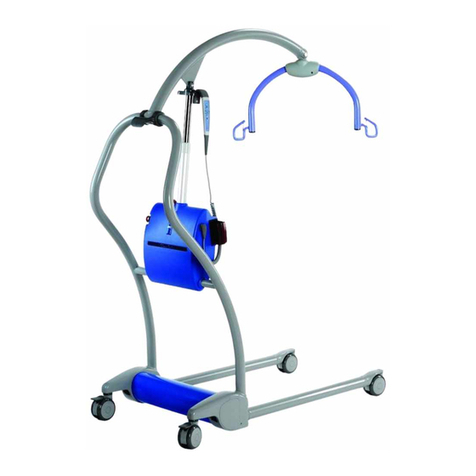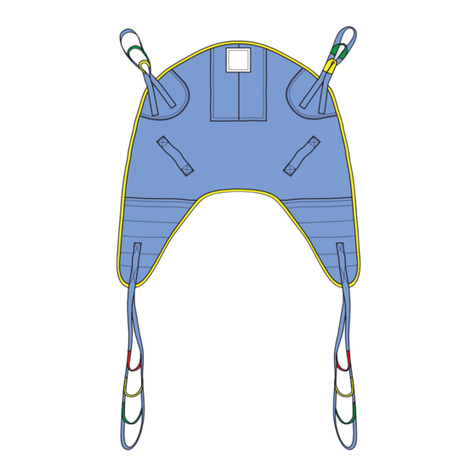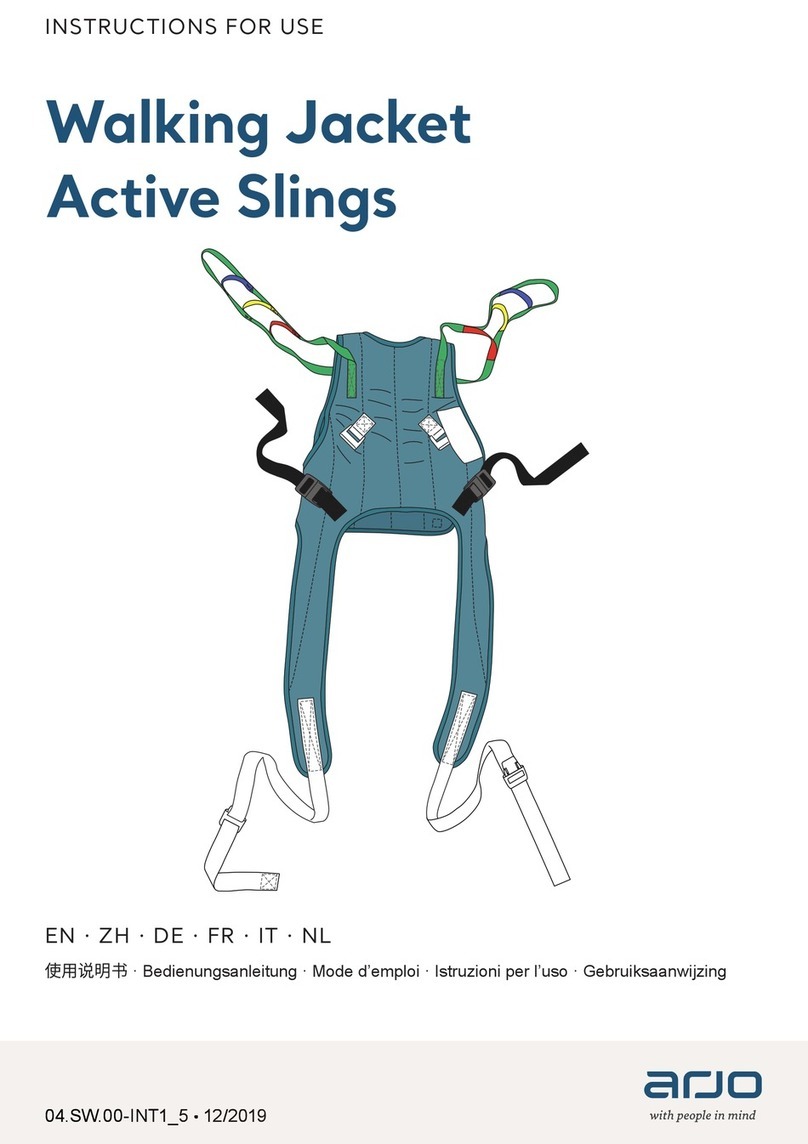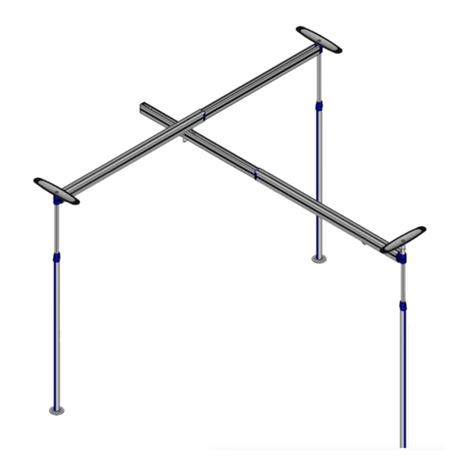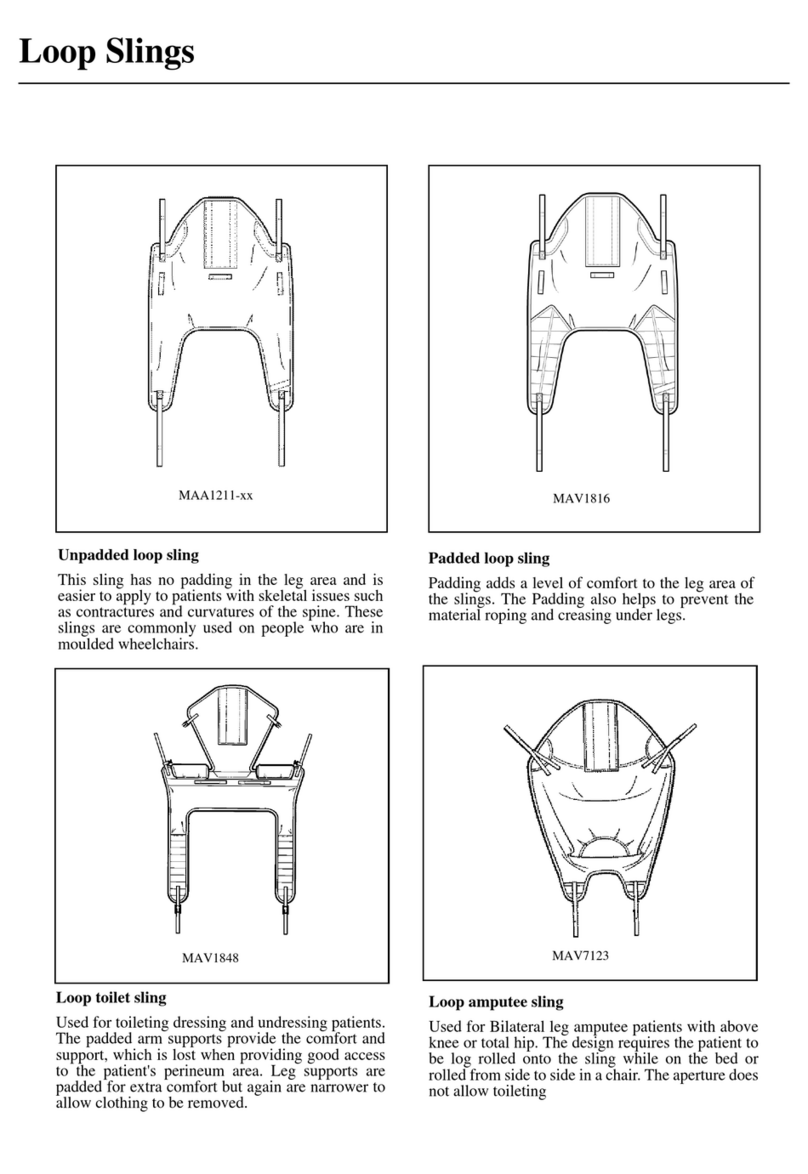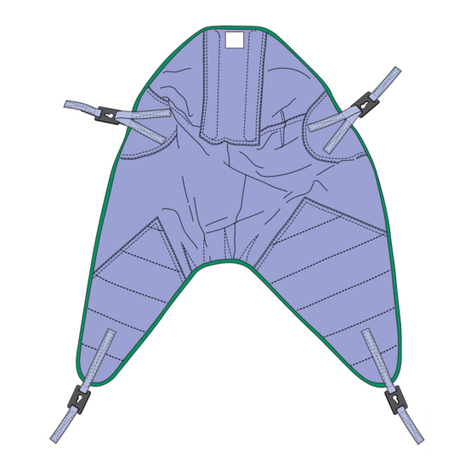
General Information
6
001.16000.33.EN rev. 18
Definitions Used in this Manual
Means: Failure to follow these instructions may
result in injury to yourself and others.
Means: Failure to follow these instructions may
cause damage to the product.
Means: This is important information regarding
the correct use of the equipment.
Intended Use
The Maxi Sky 440 is designed to assist caregivers in
hospitals, long-term care, nursing homes and home
care environment, including private homes &
patients with reduced mobility for these reasons:
1) Transferring to/from adjacent location, such as
chair, wheelchair, bed, bath, toilet, floor or
stretcher;
2) Supporting the patient for rehabilitation training;
3) Assisting patient with tasks such as, toileting and
bed positioning.
Patient transfers must be done under the
supervision of appropriately trained caregivers in
accordance with the instructions found in this
manual.The product must only be used for the
reasons stated above. It must be installed by Arjo
authorized personnel, following local codes.
Operational Life
The product is designed and tested for a useful life
of seven (7) years or 10,000 transfers—whichever
comes first—when subject to preventive
maintenance as specified in the “Care and
Maintenance” section.
Time equivalence between the number of transfers
versus the number of years is made clear in the
table in Fig. 1.
The red indicator light on the portable lift will blink
when it is about halfway to its useful life, and again
to indicate the end of the useful life period.
Aging of the cassette, frequency of use (transfers
per day), the weight of the patient and maintenance
frequency are factors that have an impact on the
Maxi Sky 440’s life span.
A transfer is defined as the displacement of a patient
from one point to another. A transfer cycle includes a
lifting and a descending action.
The expected operational life for fabric slings and
stretchers is approximately 2 years from purchase
date. The life expectancy only applies if the slings
and stretchers have been cleaned, maintained and
inspected in accordance with the “Preventive
Maintenance Schedule.”
The expected life for other consumable products,
such as batteries, fuses, lamps, slings, straps and
cords is dependent upon the care and usage of the
product concerned. Consumables must be
maintained in accordance with published
Instructions for Use and the “Preventive
Maintenance Schedule”.
Product Identification
The unit's identification number (specification,
model, serial number) appears on a silver nameplate
affixed below the casing (see Fig. 17 on page 26).
Package Contents
Upon receipt of the equipment, verify it against the
packing list to ensure it is complete. Inspect it for
possible damage due to shipping. If this the case,
contact your local Arjo agent.
How to Use this Manual
Keep this manual with the lift and refer to it as
required.
WARNING:
CAUTION:
NOTE:
Transfers per Day Years
(10,000 transfers)
4 7
6 4.5
8 3.5
Fig. 1
WARNING: The manufacturer cannot ensure
full safety for a portable lift or an accessory
of which the life span has been exceeded.
Wear may cause the breakage of a part and
lead to a patient fall.
WARNING: Do not attempt to use this lift
without fully understanding the information
contained in this manual. A misuse of this unit
may lead to a patient fall and to injuries.
